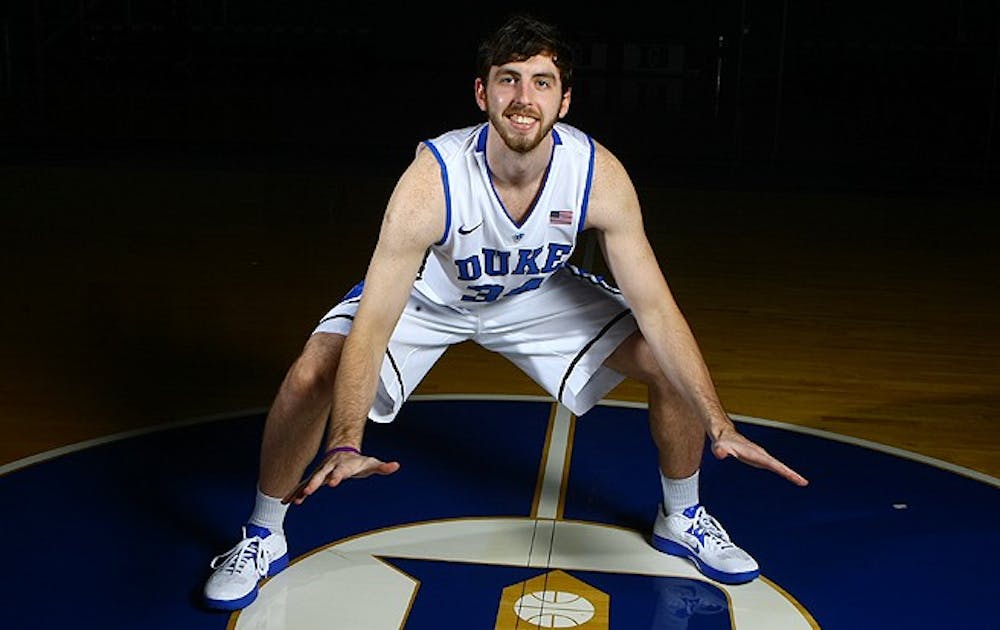There were a number of reasons why the 2011-12 Duke basketball team struggled to a disappointing finish, and one of them was especially surprising for a team under head coach Mike Krzyzewski. The Blue Devils sported one of the worst defenses in the ACC last season, and also one of the worst by any Krzyzewski-coached squad.
“One of our goals is to be better defensively,” Krzyzewski said. “The history of our program has been based on sound, good team defense. I don’t think we had that [last year]. I think we beat teams offensively last year. When you don’t have the defense, I think you miss out on a certain toughness and togetherness that’s only really found by doing things on the defensive end of the court.”
Out of 12 teams in the ACC, Duke allowed opponents to shoot the third-best field goal percentage and score the third-most points per game. According to statistics compiled by Ken Pomeroy, the Blue Devils ranked an underwhelming 70th in the nation in adjusted defensive efficiency, which measures points allowed per defensive possession. The 2011-12 campaign marked the first time since Pomeroy began keeping the statistic in 2003 that Duke ranked outside the top 20. Throughout the previous nine seasons, the Blue Devils’ average rank was ninth. The numbers are hard to stomach, but there is certainly nowhere to go but up.
This year’s team will benefit from the presence of several new players who can serve as true small forwards. Last season, Duke struggled to defend forwards with perimeter abilities. There were a number of games where 6-foot-1 point guard Tyler Thornton was forced to guard small forwards who were sometimes up to seven inches taller. Now, Krzyzewski can turn to 6-foot-8 Alex Murphy, 6-foot-8 Amile Jefferson and 6-foot-4 Rasheed Sulaimon.
“We have much more length on our team this year,” Krzyzewski said. “I don’t think we’re a particularly fast team. I’m not saying we’re slow either, but we’re pretty long.”
These three newcomers have the size to provide exactly what Duke needs on the perimeter. Other defensive improvement could come from consistency between point guards Thornton and Quinn Cook, who will play in a more defined rotation this season.
“Our point guard play, our on-the-ball defense is going to be better,” Krzyzewski said. “If we can limit second shots, keep people out of our paint, and not give up open threes—we want to be an outstanding halfcourt defensive team.”
Of course, the concern not only lies on the perimeter, but also in the interior. Duke’s rebounding will need to improve over its subpar performance last season. According to Pomeroy, Duke allowed opponents to rebound 32 percent of their missed shots, ranking 165th in the country.
Given the height advantage Duke has over many teams in the post with 6-foot-11 Ryan Kelly and 6-foot-10 Mason Plumlee, the Blue Devils should be able to compete at a higher level on the boards. Even in the team’s two exhibition games, against Western Washington and Winston-Salem State, opponents grabbed 18 and 19 offensive rebounds, respectively. If Duke wants to compete in the ACC, this is a problem that must be fixed.
In a lot of ways, this Blue Devil team is similar to many other past squads: good shooting, good chemistry and, of course, good coaching. But an essential element that was missing a year ago was good defense, and with more length on the perimeter and experience in the post, Duke has taken a step in the right direction.
Get The Chronicle straight to your inbox
Signup for our weekly newsletter. Cancel at any time.

